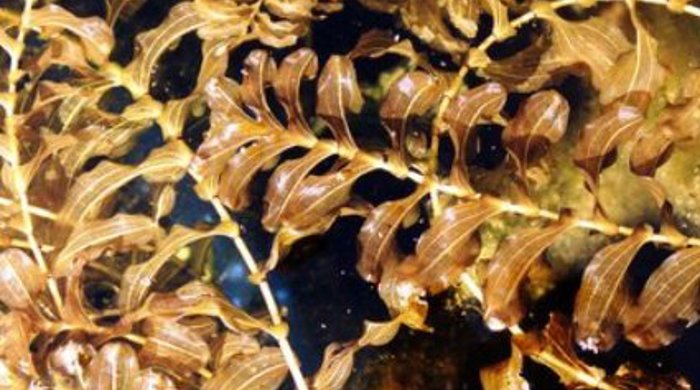Potamogeton perfoliatus
Clasped pondweed
Family: Potamogetonaceae
Origin: Africa, Australia, Eurasia, North America
Regional Pest Management Plan (RPMP) status
- National Pest Plant Accord Species
General description
Perennial submerged aquatic herb. Roots and rhizomes are slender. Stems are < 2 m long, trailing and leafy. Leaves are ovate, translucent, alternate and basally wrapped around the stem. Flowers are small, green and borne on spikes in November – January. Fruit is olive green and smooth.
What you need to know
To help protect our environment:
- You must not breed, distribute, release or sell clasped pondweed. As clasped pondweed is a National Pest Plant Accord species, these restrictions apply within the Auckland region and across the whole of New Zealand.
Habitats
Flowing or still freshwater bodies, lakes, streams, ponds, estuaries.
Dispersal
Sets seed. Vegetative spread from stem fragments. Seeds and stem fragments dispersed by water and possibly birds. Human-mediated dispersal through disposal of aquarium waste and movement of contaminated boats, trailers, machinery and equipment.
Impact on environment
Can form dense infestations, altering natural habitat structure and blocking waterways. May hybridise with native Potamogeton spp.
Control
Site Management
Very difficult to control once established. Requires an aquatic pest plant control operator. Contact Auckland Council for control options.
Recommended approaches
Physical control
Method: Dig out.
Plant parts requiring disposal: All parts.
Disposal options: Remove to greenwaste or landfill if practical.
Biocontrol
Biocontrol is currently not available for this species.
Caution: When using any herbicide or pesticide please read the label thoroughly to ensure that all instructions and safety requirements are followed.





